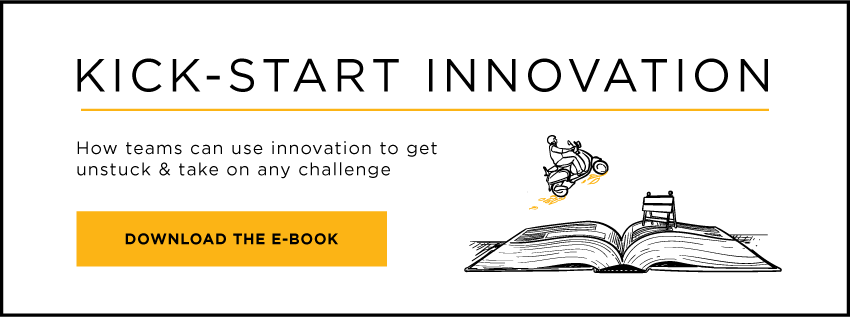Do you remember when you were a little kid, proudly bringing home your latest drawing to display on the family fridge? It probably never occurred to you that your drawing was “fridge material” or that you had what it took to draw a picture that deserved to be displayed so prominently.
Kids are great that way. They long to be creative and take pride in their work, regardless of how it compares to others. But by high school, that enthusiasm starts to wane, and by adulthood, their creative confidence is often firmly locked away next to their belief in Santa Claus and dreams of becoming a superhero.
That’s when the myths about what creativity means and who has it take hold. In my last blog post, I wrote about the First Myth of Creativity: that you need to be an artist to be creative. The second myth is that creativity is an all or nothing state. A lot of people think you either are a creative or you aren’t. They are wrong.
Creativity is a Continuum
Creative people aren’t slotted into their own special category away from everyone else. Everyone is creative in their own way, and most people (even the artists and designers) excel in some kinds of creativity while struggling with others. In the world of design thinking that can be a good thing.
Having diversity of thought on a team is vital for innovation. The most creative teams are made up of different types of thinkers who each bring their own brand of creativity to the table. While one person may be great at generating big ideas or drawing detailed pictures, another will be better at iterating on those ideas to improve them, and someone else will thrive at facilitating these sessions to ensure everyone’s voice is heard.
And yes, there will always be a few quiet analysts in the room who are deeply uncomfortable with the buoyant nature of brainstorming and struggle to silence the devil’s advocate whispering in their ear. But even these analytical thinkers play an important creative role in the design thinking process. While they may not be jumping out of their seat to add crazy “builds” to the brainstorming wall of ideas, they are often the best at sifting through those ideas at the end of the day to identify the nuggets of brilliance that deserve to be turned into prototypes.
When team leaders understand who is on their team and how to leverage their unique type of creativity they get the most benefit from brainstorming sessions, and leave everyone feeling confident about their creative contributions to the process.
Knowing Where “Your Creative Strength” Lies
In order to identify your creative strengths, you first need to let go of rigid notions about what creativity is (it is not just the ability to draw), then think about what you love to do. Are you a great mentor? Can you format a killer spreadsheet or write a workplace newsletter? Do customers love interacting with you? These are all forms of creativity and each is equally valid.
When we acknowledge our own creative abilities, we are better able to contribute to the design thinking process — and to recognize the brilliance of others and the creative benefits they bring to this process.
Next up: Myth #3: The creative genius.
Learn how to enable innovation skill-building at scale or download our free ebook Kickstart Innovation: A Guide for Organizations.
Kimberly Douglas, SHRM-SCP, CPF, is President of FireFly Facilitation, Inc., and is a nationally recognized strategic planning, team effectiveness, and innovation expert. Over the past 25 years, she has collaborated with hundreds of leaders — at organizations such as Coca-Cola, Home Depot, McKesson, AT&T, and even the U.S. Marine Corps — to dramatically improve their business performance. A SHRM Senior Certified Professional and a Certified Professional Facilitator, Kimberly also holds a Master of Science in industrial/organizational psychology. Prior to founding FireFly seventeen years ago, Kimberly was an organization effectiveness manager for Coca-Cola; a Director of Consulting with the Hay Group; and served in HR leadership roles in the hospitality, telecommunications, and healthcare industries.
